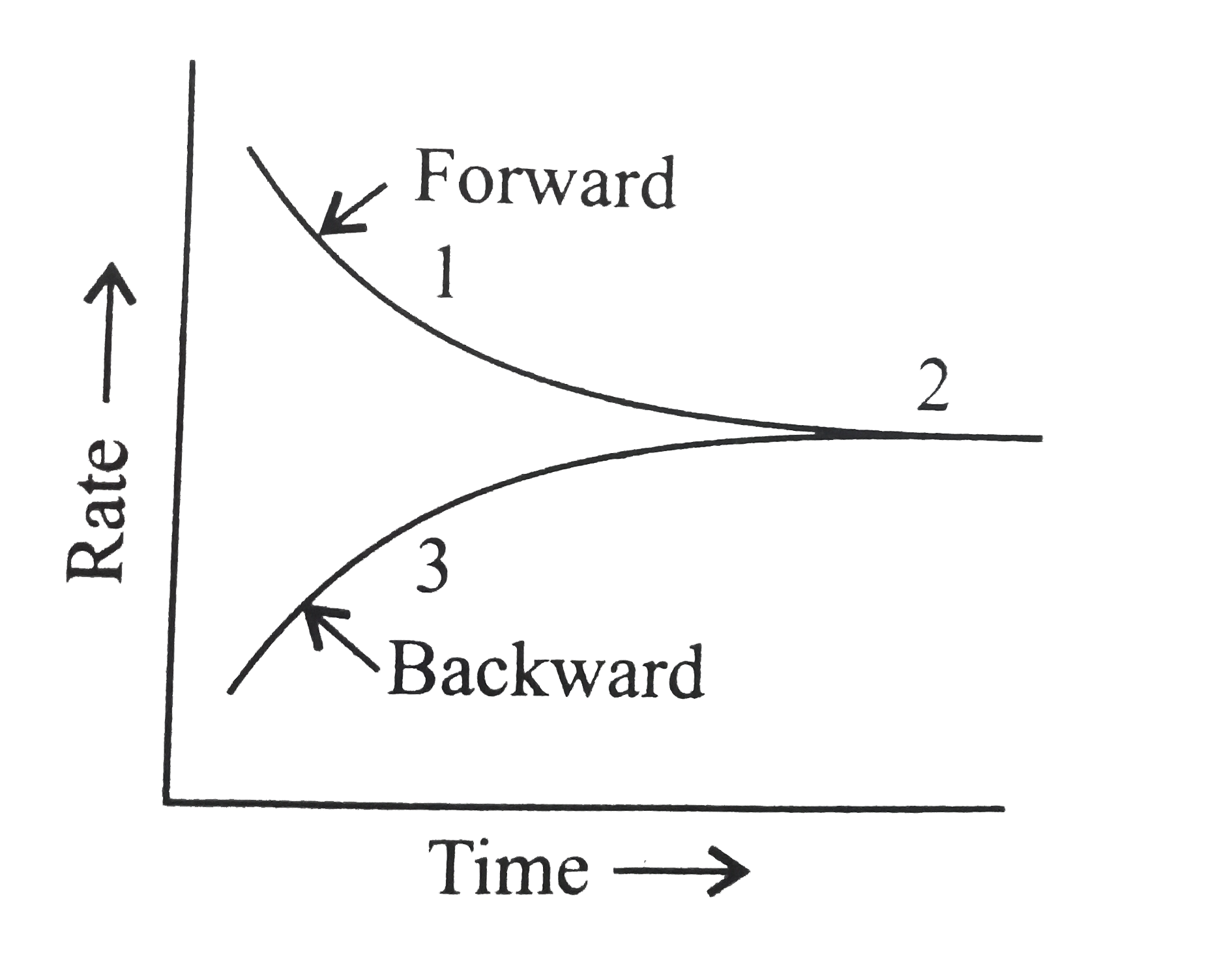Consider the following reactions and answer the following questions.
M(Double salt)+NH4Cl(s)+NH4OH→No ppt.
M(double salt)+NaOH solution→N↑+P↓ (coloured ppt.)
Q. P↓+conc. HCl→Q(coloured solution)
Incorrect statement about Q is:
It can exist in dimeric form
Its aqueous solution is acidic
It is used in methylene blue test for H2S
On passing Cl2 gas colour of aqueous solution of Q changes
The correct Answer is:C
To solve the question regarding the reactions involving the double salt M and to identify the incorrect statement about Q, we will analyze each step of the reactions provided.
1. Identify the Double Salt (M):
- M is identified as Mohr's salt, which has the formula FeSO4⋅(NH4)2SO4⋅6H2O.
Hint: Recognize that Mohr's salt is a common double salt containing iron and ammonium.
2. First Reaction:
- The reaction of Mohr's salt (M) with NH4Cl and NH4OH results in no precipitate. This indicates that the ions present do not form any insoluble compounds under these conditions.
Hint: Consider the solubility rules for ammonium salts and hydroxides.
3. Second Reaction:
- The second reaction involves Mohr's salt reacting with NaOH. This leads to the liberation of nitrogen gas (N) and the formation of a colored precipitate (P), which is Fe(OH)2 (ferrous hydroxide).
Hint: Recall that ferrous hydroxide is typically a green precipitate.
4. Formation of Q:
- The precipitate P (ferrous hydroxide) reacts with concentrated HCl to form FeCl2 (Q), which is a colored solution. The color of FeCl2 is green.
Hint: Understand that the reaction of a metal hydroxide with an acid typically results in the formation of a salt and water.
5. Properties of Q:
- Now we analyze the properties of FeCl2:
- It exists in dimeric form in the vapor phase.
- Its aqueous solution is acidic.
- It is not used in the methylene blue test for H2S; instead, FeCl3 is used for that test.
- On passing chlorine gas through FeCl2, it changes to FeCl3, which is yellow.
Hint: Be aware of the specific tests and reactions involving iron(II) and iron(III) compounds.
6. Identify the Incorrect Statement:
- The incorrect statement about Q is that it is used in the methylene blue test for H2S. This is false because FeCl3 is the compound used in that test, not FeCl2.
Conclusion:
The incorrect statement about Q is that it is used in the methylene blue test for H2S.
- M is identified as Mohr's salt, which has the formula FeSO4⋅(NH4)2SO4⋅6H2O.
- The reaction of Mohr's salt (M) with NH4Cl and NH4OH results in no precipitate. This indicates that the ions present do not form any insoluble compounds under these conditions.
- The second reaction involves Mohr's salt reacting with NaOH. This leads to the liberation of nitrogen gas (N) and the formation of a colored precipitate (P), which is Fe(OH)2 (ferrous hydroxide).
- The precipitate P (ferrous hydroxide) reacts with concentrated HCl to form FeCl2 (Q), which is a colored solution. The color of FeCl2 is green.
- Now we analyze the properties of FeCl2:
- It exists in dimeric form in the vapor phase.
- Its aqueous solution is acidic.
- It is not used in the methylene blue test for H2S; instead, FeCl3 is used for that test.
- On passing chlorine gas through FeCl2, it changes to FeCl3, which is yellow.
- The incorrect statement about Q is that it is used in the methylene blue test for H2S. This is false because FeCl3 is the compound used in that test, not FeCl2.
The incorrect statement about Q is that it is used in the methylene blue test for H2S.
Topper's Solved these Questions
- TYPES OF REACTIONSBOOK - VK JAISWAL ENGLISHCHAPTER - TYPES OF REACTIONSEXERCISE - ONE OR MORE ANSWERS IS/ARE CORRECT
40 Videos
- TYPES OF REACTIONSBOOK - VK JAISWAL ENGLISHCHAPTER - TYPES OF REACTIONSEXERCISE - MATCH THE COLUMN
14 Videos
- TYPES OF REACTIONSBOOK - VK JAISWAL ENGLISHCHAPTER - TYPES OF REACTIONSEXERCISE - LEVEL 2
196 Videos
- s-BLOCK ELEMENTSBOOK - VK JAISWAL ENGLISHCHAPTER - s-BLOCK ELEMENTSEXERCISE - SUBJECTIVE PROBLEMS
2 Videos
Similar Questions
Consider the following reactions and answer the following questions.
M(Double salt)+NH4Cl(s)+NH4OH→No ppt.
M(double salt)+NaOH solution→N↑+P↓ (coloured ppt.)
Q. Reaction does not occur with salt M and gas N:
View SolutionConsider the following reactions and answer the following questions.
M(Double salt)+NH4Cl(s)+NH4OH→No ppt.
M(double salt)+NaOH solution→N↑+P↓ (coloured ppt.)
Q. Which of the following pair of cations are present in salt M?
View SolutionConsider the following salts. Which one(s) when dissolved in water will produce an acidic solution?
1. NH4Cl , 2. KHSO4 , 3. NaCN , 4. KNO3
View SolutionConsider the following salts. Which one(s) when dissolved in water will produce a basic solution?
1. RbClO4 , 2. NaNO2 , 3. NH4Cl , 4. NaCl
View SolutionArrange the following 0.1M solutions in order of increasing pH:
H2CO3,HBr,HI,NH3,KCN,NaOH,NH4Br
View SolutionWhich of the following nitrate salt solution neither produce ppt. with excess NaOH nor with excess NH4OH solution?
View SolutionWhich of the following aqueous solution of cation(s) give(s) white ppt. with NaOH and NH4OH solution and formed ppt. is/are further completely dissolved in one of the excess reagent?
View SolutionMass action rato or reaction quotient Q for a reaction can be calculate using the law of masss action
A(g)+B(g)⇔C(g)+D(g)
Q=[C][D][A][B]
The value of Q decides whether the reaction is at equilibrium or not.
At equilibrium, Q=K
For an equilibrium process, Q≠K
when Q>K, reaction will favour backward direction and when Q<K, it will favour direction.
Answer the following questions:
In the reaction:
NH4Cl(g)⇔NH3(g)+HCl(g)
a graph is plotted to show that the variation or the rate of forward and backward reaction against time.
Which of following is correct?

View SolutionAssertion In aqueous solution Mohr' s salt gives NH⊕4Fe2+ and SO2−4 ions
Reason Mohr' s salt is a double salt .
View SolutionIn Which of the following respective volume ratios should 0.1MNH4OH solution & 0.1MHCl solution be mixed so that the resulting solution behaves like a buffer solution.?
View Solution
